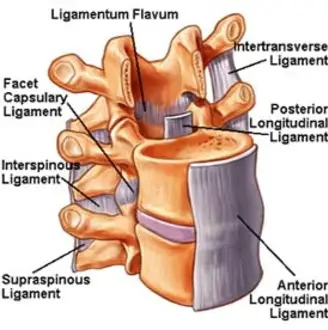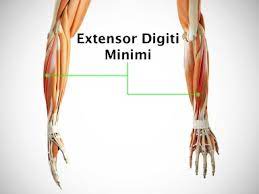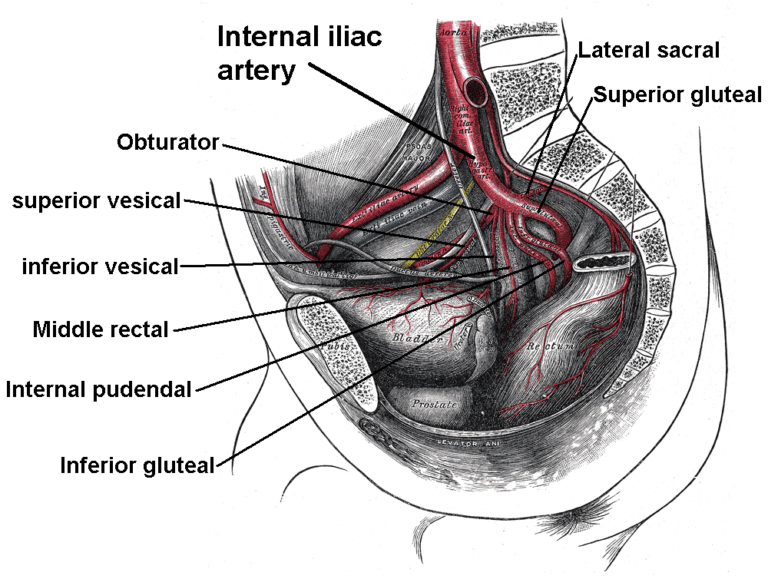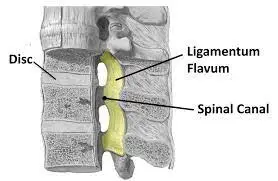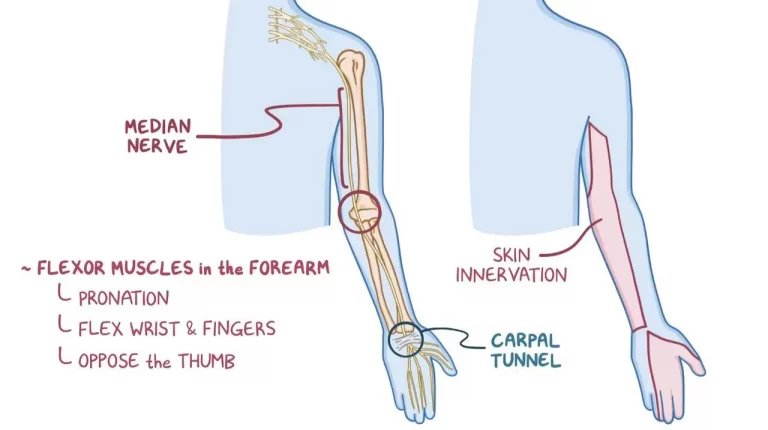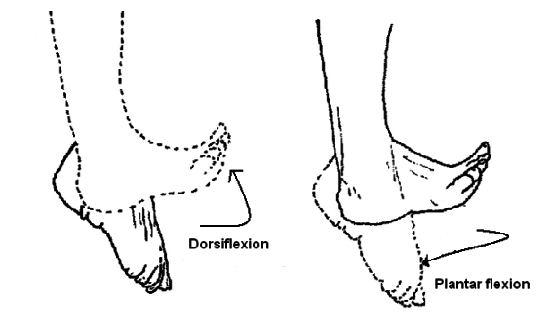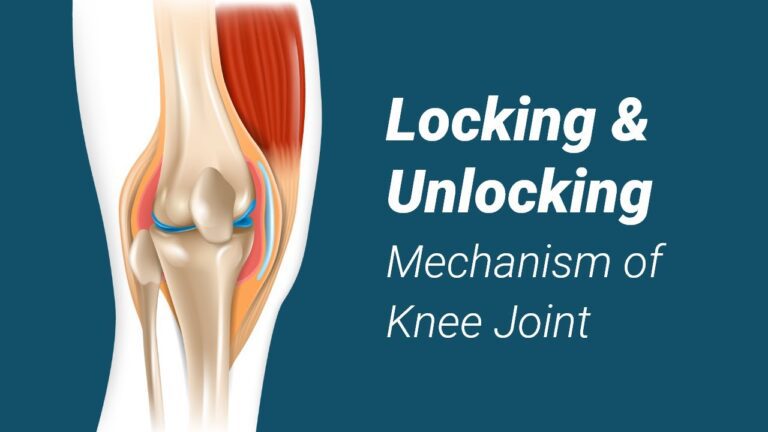Posterior Longitudinal Ligament
Table of Contents
Introduction
The posterior longitudinal ligament (PLL) is a strong band of fibrous tissue that runs along the posterior (back) aspect of the vertebral bodies in the spinal column. It is one of the major ligaments that help to support and stabilize the spine, along with the anterior longitudinal ligament (ALL) and the ligamentum flavum.
The posterior longitudinal ligament extends from the top of the sacrum (the triangular bone at the base of the spine) all the way up to the axis vertebra (the second cervical vertebra). It is wider in the lumbar region and narrower in the cervical region.
The posterior longitudinal ligament is thicker in the lower back than in the upper back and neck. The main function of the posterior longitudinal ligament is to prevent excessive forward bending (flexion) of the spine. It also helps to maintain the normal curvature of the spine and protect the spinal cord from injury.
Structure of the Posterior Longitudinal Ligament
The posterior longitudinal ligament (PLL) is a dense fibrous band that runs along the posterior (back) aspect of the vertebral bodies in the spinal column. It is one of the major ligaments that help to support and stabilize the spine, along with the anterior longitudinal ligament (ALL) and the ligamentum flavum.
The posterior longitudinal ligament extends from the top of the sacrum (the triangular bone at the base of the spine) all the way up to the axis vertebra (the second cervical vertebra). It is wider in the lumbar region and narrower in the cervical region. The posterior longitudinal ligament is thicker in the lower back than in the upper back and neck.
The posterior longitudinal ligament is composed of collagen fibers that are arranged in a criss-cross pattern, giving it strength and flexibility. It is attached to the vertebral bodies and intervertebral discs along its entire length.
The main function of the posterior longitudinal ligament is to prevent excessive forward bending (flexion) of the spine. It also helps to maintain the normal curvature of the spine and protect the spinal cord from injury.
Attachments of the Posterior Longitudinal Ligament
The posterior longitudinal ligament (PLL) is a very strong and flexible fibrous band that passes along the posterior (back) side of the vertebral bodies in the spinal column. It is attached to the vertebral bodies and intervertebral discs along its entire length.
The attachment of the posterior longitudinal ligament to the vertebral bodies is through a series of small fibers that attach to the outer surface of each vertebral body. These fibers are known as Sharpey’s fibers and they help to anchor the ligament to the bone.
In the lumbar region, the posterior longitudinal ligament is wider and thicker than in the cervical region. The ligament attaches to the posterior surface of the vertebral bodies and extends over the intervertebral discs. In the cervical region, the posterior longitudinal ligament is narrower and thinner than in the lumbar region. It attaches to the posterior surface of the vertebral bodies and extends over the intervertebral discs as well.
At the top of the sacrum, the posterior longitudinal ligament attaches to the posterior surface of the sacrum and extends up to the axis vertebra (C2). The attachment of the ligament to the sacrum is through a broad base. This attachment provides stability to the lower part of the spine.
The attachment of the posterior longitudinal ligament to the axis vertebra is unique. The ligament attaches to a bony ridge on the posterior surface of the axis vertebra called the posterior tubercle. This attachment provides stability to the upper part of the spine.
In general, the posterior longitudinal ligament is attached to the vertebral bodies and intervertebral discs along its entire length. Its attachment to the sacrum and axis vertebra provides stability to the lower and upper parts of the spine, respectively. The attachment of Sharpey’s fibers helps to anchor the ligament to the bone, providing strength and stability to the spine.
Functions of the Posterior Longitudinal Ligament
The posterior longitudinal ligament (PLL) has several important functions in the spine.
Stabilization of the spine: The posterior longitudinal ligament helps to stabilize the spine by limiting excessive movement between the vertebrae. It acts as a passive restraint that prevents excessive flexion (forward bending) and extension (backward bending) of the spine. This is important for maintaining the structural integrity of the spine and preventing injury.
Protection of the spinal cord: The posterior longitudinal ligament also plays a role in protecting the spinal cord. It is located directly behind the spinal cord and acts as a barrier that helps to prevent compression or injury to the cord. In cases of spinal cord injury, the posterior longitudinal ligament may become damaged or torn, which can lead to further damage to the spinal cord.
Support of the intervertebral discs: The posterior longitudinal ligament provides support to the intervertebral discs, which are located between each pair of vertebrae. The ligament helps to distribute pressure evenly across the discs, which helps to prevent degeneration and herniation of the discs.
Maintenance of proper spinal alignment: The posterior longitudinal ligament helps to maintain proper alignment of the spine. It works in conjunction with other ligaments and muscles to ensure that the spine remains in its proper position. This is important for preventing abnormal stresses on the spine and reducing the risk of injury.
Facilitation of spinal movement: While the posterior longitudinal ligament primarily acts as a stabilizer, it also allows for some degree of spinal movement. This is important for maintaining flexibility and range of motion in the spine.
In summary, the posterior longitudinal ligament plays an important role in stabilizing and protecting the spine, supporting the intervertebral discs, maintaining proper spinal alignment, and facilitating spinal movement. Its functions are essential for maintaining a healthy and functional spine.
Blood supply of the Posterior Longitudinal Ligament
The posterior longitudinal ligament (PLL) receives its blood supply from several sources. The majority of blood supply to the posterior longitudinal ligament comes from the basivertebral artery, which is a branch of the anterior spinal artery. The basivertebral artery runs along the anterior aspect of the spinal column and supplies blood to the vertebral bodies, intervertebral discs, and spinal cord.
In addition to the basivertebral artery, the posterior longitudinal ligament also receives blood supply from the posterior spinal arteries, which run along the posterior aspect of the spinal column. These arteries supply blood to the spinal cord and its surrounding structures.
The posterior longitudinal ligament also receives blood supply from branches of the segmental arteries, which are small arteries that originate from the aorta and run along the spinal column. These arteries supply blood to the muscles, ligaments, and other structures in the back.
Overall, the blood supply to the posterior longitudinal ligament is important for maintaining its structural integrity and function. Without adequate blood supply, the ligament may become weakened or damaged, which can lead to instability or injury of the spine.
Pathology of the Posterior Longitudinal Ligament
Pathology of the posterior longitudinal ligament (PLL) can occur due to various reasons, including degenerative changes, trauma, infection, and inflammation. The following are some of the common pathologies associated with the posterior longitudinal ligament:
Ossification of the posterior longitudinal ligament (OPLL): Ossification of the posterior longitudinal ligament is a condition in which the posterior longitudinal ligament undergoes abnormal calcification and becomes rigid, leading to spinal canal stenosis. This condition can cause compression of the spinal cord and nerve roots, resulting in symptoms such as numbness, weakness, and difficulty walking. Ossification of the posterior longitudinal ligament is more common in older adults and those with a history of spinal injury or surgery.
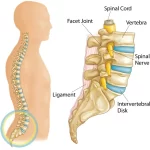
Herniation of the intervertebral disc: The intervertebral discs are located between the vertebral bodies and are held in place by the posterior longitudinal ligament. When a disc herniates, it can put pressure on the posterior longitudinal ligament, causing it to stretch or tear. This can lead to instability of the spine and compression of the spinal cord or nerve roots. Symptoms of disc herniation may include back pain, sciatica, and muscle weakness.
Trauma: Trauma to the spine can cause damage to the posterior longitudinal ligament, leading to instability of the spine and compression of the spinal cord or nerve roots. Trauma can result from car accidents, falls, sports injuries, or other types of accidents.
Infection: In rare cases, the posterior longitudinal ligament can become infected, leading to inflammation and damage to the ligament. This can occur as a result of a bacterial or fungal infection that spreads from another part of the body to the spine.
Inflammation: Chronic inflammation in the spine can also lead to damage to the posterior longitudinal ligament. Conditions such as ankylosing spondylitis and rheumatoid arthritis can cause inflammation of the spine and lead to erosion and weakening of the ligament.
So in the end, pathology of the posterior longitudinal ligament can lead to instability of the spine and compression of the spinal cord or nerve roots, resulting in a range of symptoms and complications. Treatment options may include medications, physical therapy, surgery, or a combination of these approaches, depending on the underlying cause and severity of the condition.
Symptoms of the Posterior Longitudinal Ligament Injury
The PLL (Posterior Lateral Ligament) is a ligament located in the knee joint that connects the femur bone to the tibia bone. It is responsible for providing stability to the knee joint during movements such as walking, running, and jumping.
When the posterior longitudinal ligament is injured or damaged, it can result in a variety of symptoms. These symptoms include:
- Pain: The most common symptom of a posterior longitudinal ligament injury is pain. The pain may be felt in the back of the knee and may be sharp or dull.
- Swelling: Swelling is another common symptom of a posterior longitudinal ligament injury. The knee may get swollen and tender to the touch.
- Stiffness: The knee may feel stiff and difficult to move, especially in the morning or after sitting for a long time.
- Instability: The knee may be experienced unstable or wobbly, especially during standing or walking.
- Limited range of motion: The knee may have a limited range of motion, making it difficult to bend or straighten the leg.
- Difficulty bearing weight: The knee may feel weak and it may be difficult to maintain weight on the affected leg.
- Clicking or popping sounds: Some people may experience clicking or popping sounds when they move their knees.
If you are feeling any of these symptoms, it is very necessary to see a doctor for an accurate diagnosis and treatment plan. Treatment options may include rest, physical therapy, braces, or surgery depending on the severity of the injury.
Diagnosis
The diagnosis of a Posterior Lateral Ligament (PLL) injury typically begins with a physical examination by a doctor or orthopedic specialist. During the exam, the doctor will ask about the patient’s symptoms and medical history, as well as perform a physical examination of the knee joint.
The physical examination may include tests to assess the stability of the knee joint, such as the posterior drawer test or the dial test. These tests involve applying pressure to the knee joint and observing how it moves.
If a posterior longitudinal ligament injury is suspected, imaging tests may be ordered to confirm the diagnosis and assess the severity of the injury. These tests may involve X-rays, CT (Computed Tomography) scans, or MRI (Magnetic Resonance Imaging).
X-rays can help rule out other conditions that may cause knee pain, such as a fracture or arthritis. MRI and CT scans can provide more detailed images of the knee joint and surrounding tissues, allowing doctors to identify any damage to the posterior longitudinal ligament or other ligaments.
Once a diagnosis is confirmed, treatment options should be discussed with the patient. In some cases, conservative treatments such as rest, ice, compression, and elevation (RICE) or physical therapy may be sufficient to manage symptoms and promote healing. In more severe conditions, surgery may be needed to repair or reconstruct the damage to the ligament.
Treatment of the Posterior Longitudinal Ligament Injury
Conservative tretament
Conservative treatment for a Posterior Lateral Ligament (PLL) injury typically involves non-surgical methods aimed at managing symptoms and promoting healing. This type of treatment is often used for mild to moderate injuries that do not require surgery.
The following are some of the conservative treatment options for posterior longitudinal ligament injuries:
- Rest: Resting the affected knee joint is essential to allow the ligament to heal. Patients may need to avoid activities that aggravate the injury, such as running, jumping, or twisting movements.
- Ice: The application of ice to the injured area can help in reducing pain and swelling. Patients should apply ice packs to the affected knee for 20-30 minutes several times a day.
- Compression: Compression can help reduce swelling and provide support to the injured knee joint. Patients may use an elastic bandage or compression sleeve to wrap the affected knee.
- Elevation: Elevating the affected knee above the level of the heart can help reduce swelling and improve blood flow. Patients should try to keep their legs elevated as much as possible.
- Physical therapy: Physical therapy can help improve the range of motion, strength, and stability of the knee joint. A physical therapist may prescribe exercises, stretches, and other therapies to help patients recover from a posterior longitudinal ligament injury.
- Medications: Over-the-counter pain relievers, such as acetaminophen or ibuprofen, may be recommended in order to manage pain and inflammation.
Conservative treatment for a posterior longitudinal ligament injury typically lasts several weeks to several months, depending on the severity of the injury. Patients may need to use crutches or wear a knee brace during the recovery period. It is essential to follow the doctor’s instructions and attend all follow-up appointments to monitor progress and adjust treatment as needed.
Physiotherapy treatment
PLL, or Posterior Longitudinal Ligament, is a condition where the ligament that runs along the back of the spinal column becomes thickened and calcified, leading to compression of the spinal cord and nerve roots. This can cause symptoms such as pain, numbness, weakness, and difficulty with movement.
Physiotherapy treatment for the posterior longitudinal ligament typically involves a combination of manual therapy, exercise, and education. The goal of treatment is to reduce pain and improve mobility, strength, and function.
Manual therapy techniques may include soft tissue massage, joint mobilization, and stretching to help relieve muscle tension and improve joint mobility. These techniques can also help to reduce inflammation and improve circulation to the affected area.
Exercise is an important component of physiotherapy treatment for the posterior longitudinal ligament. Strengthening exercises can help to improve muscle function and stability around the affected area while stretching exercises can help to improve flexibility and range of motion. Aerobic exercise may also be recommended to improve cardiovascular health and overall fitness.
Education is an important aspect of physiotherapy treatment for the posterior longitudinal ligament. Patients will be taught proper posture and body mechanics to help reduce stress on the affected area. They may also be given tips on how to perform daily activities such as lifting and bending without exacerbating their symptoms.
In addition to these techniques, modalities such as heat or cold therapy, electrical stimulation, or ultrasound may be used to help reduce pain and inflammation.
Overall, physiotherapy treatment for the posterior longitudinal ligament is designed to address the underlying causes of the condition and help patients manage their symptoms effectively. With a comprehensive treatment plan that includes manual therapy, exercise, education, and modalities, many patients can achieve significant improvements in their mobility, function, and quality of life.
Risk factors
There are several risk factors associated with the development of the posterior longitudinal ligament. These include:
- Age: posterior longitudinal ligament is more common in older adults, particularly those over the age of 50.
- Gender: Women are more likely to develop posterior longitudinal ligament than men.
- Genetics: There may be a genetic component to the development of the posterior longitudinal ligament, as it tends to run in families.
- Obesity: Being overweight or obese can create excessive stress on the spinal column, increasing the risk of developing posterior longitudinal ligament.
- Trauma: A history of spinal trauma, such as a car accident or fall, can increase the risk of developing a posterior longitudinal ligament.
- Spinal surgery: Previous spinal surgery can also increase the risk of developing posterior longitudinal ligament.
- Arthritis: Certain types of arthritis, such as osteoarthritis or rheumatoid arthritis, can increase the risk of developing posterior longitudinal ligament.
- Diabetes: People with diabetes may be at increased risk of developing posterior longitudinal ligament, possibly due to changes in the metabolism of calcium and other minerals in the body.
- Smoking: Smoking can impair blood flow to the spinal column, which may increase the risk of developing posterior longitudinal ligament.
- Poor posture: Poor posture can put extra stress on the spinal column, increasing the risk of developing posterior longitudinal ligament over time.
It is very necessary to note that having one or more of these risk factors does not necessarily mean that a person will develop a posterior longitudinal ligament. However, individuals with these risk factors should be aware of their increased risk and take steps to prevent or manage the condition if it does occur.
How to prevent injuries of the posterior longitudinal ligament
Preventing injuries of the PLL (Posterior Longitudinal Ligament) can be challenging as some of the risk factors such as age and genetics cannot be controlled. However, there are several steps that can be taken to reduce the risk of developing posterior longitudinal ligament or prevent further injury if it has already occurred. Here are some ways to prevent injuries to the posterior longitudinal ligament:
- Maintain a healthy weight: Being overweight or obese can put extra stress on the spinal column, increasing the risk of developing posterior longitudinal ligament. Therefore, maintaining a healthy weight through a balanced diet and regular exercise can help prevent injuries to the posterior longitudinal ligament.
- Practice good posture: Poor posture can put extra stress on the spinal column, increasing the risk of developing posterior longitudinal ligament over time. Therefore, it is important to maintain good posture while sitting, standing, and walking. This includes keeping the shoulders back, chest out, and head aligned with the spine.
- Exercise regularly: Regular exercise can help strengthen the muscles and bones in the body, including those in the spine. This can help reduce the risk of developing posterior longitudinal ligament or prevent further injury if it has already occurred.
- Avoid smoking: Smoking can impair blood flow to the spinal column, which may increase the risk of developing posterior longitudinal ligament. Therefore, quitting smoking or avoiding it altogether can help prevent injuries to the posterior longitudinal ligament.
- Wear protective gear: If you participate in activities that put you at risk for spinal injury, such as contact sports or heavy lifting, it is important to wear appropriate protective gear such as helmets, back braces, or support belts.
- Seek prompt medical attention for any spinal injuries: If you experience any signs or symptoms of spinal injury such as back pain, numbness, or tingling in your arms or legs, seek prompt medical attention. Early intervention can help prevent further damage to the spine and reduce the risk of developing Posterior Longitudinal Ligament.
In summary, preventing injuries of the posterior longitudinal ligament involves maintaining a healthy weight, practicing good posture, exercising regularly, avoiding smoking, wearing protective gear, and seeking prompt medical attention for any spinal injuries.
FAQ
The posterior longitudinal ligament is a fibrous band that runs along the back of the vertebral bodies in the spine.
The posterior longitudinal ligament helps to stabilize the spine and prevent excessive flexion (forward bending) of the vertebral column.
A posterior longitudinal ligament injury can be caused by trauma to the spine, degenerative changes in the spine, or a genetic predisposition to spinal disorders.
Symptoms of a posterior longitudinal ligament injury may include pain in the back or neck, numbness or tingling in the arms or legs, weakness in the limbs, and difficulty walking or standing.
A posterior longitudinal ligament injury can be diagnosed through a physical examination, imaging tests such as X-rays or MRI scans, and other diagnostic tests such as nerve conduction studies.
Treatment for a posterior longitudinal ligament injury may include rest, physical therapy, pain medication, and in severe cases, surgery.
While it is not always possible to prevent a posterior longitudinal ligament injury, maintaining good posture, exercising regularly, and avoiding activities that put excessive strain on the spine can help reduce the risk of injury.
The ligament is more noticeable than the anterior longitudinal ligament in that it is very short at the vertebral bodies and wider at the intervertebral disc space. This is important in understanding some pathological conditions of the spine such as the typical location for a spinal disc herniation.

